As mentioned in a previous post, Umyonsan is the closest hill to our apartment. In fact from the front door to the start of a trail takes about 2 minutes. While the western and northern sides of the mountain is mainly occupied by military installations, the northern and eastern side has a few more exciting options for tree huggers like us.
Before I forget, here are some photos of the outside gyms that are dotted around the mountains in Korea.
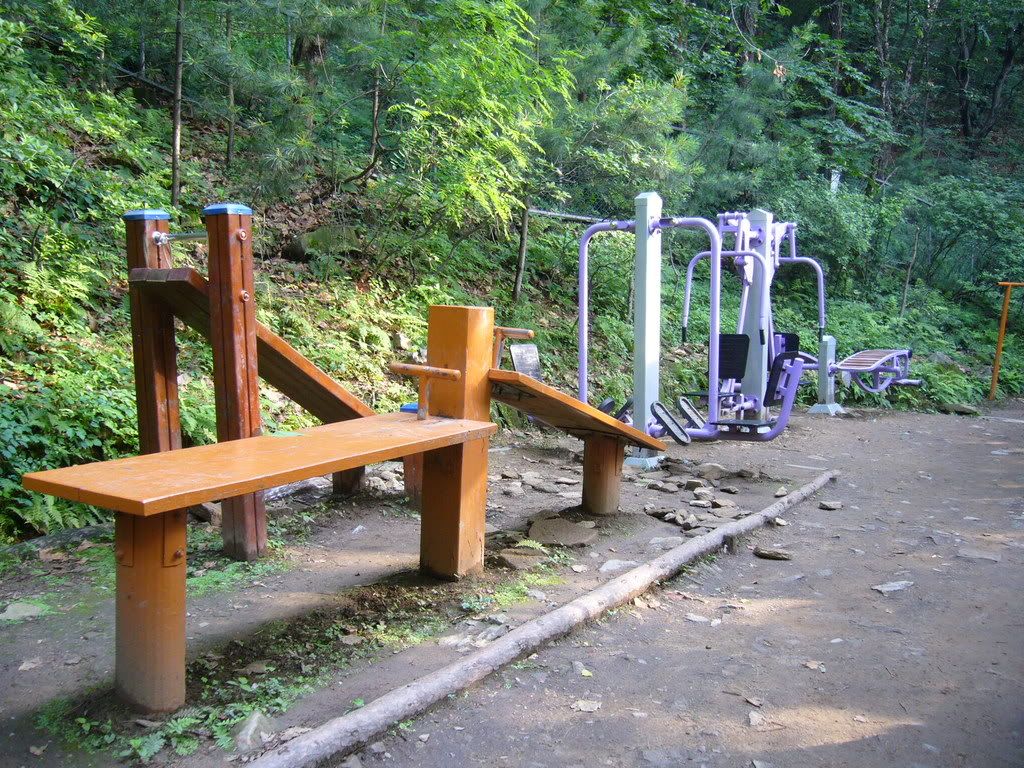

Early mornings on the mountain can often resemble an episode from
The Smurfs or a scene from
Darby O' Gill and the Little People, as pint sized 아저씨and 아주머 scurry from one machine to the next, engaging in exercises that closely resemble the self abuse seen during
Thaipusam.I had never seen a grandfather hang four feet off the ground by his ankles before I came to Korea, nor winced while watching a grandmother do bunny hops while holding a 20kg barbell across her shoulders - no time for warm ups in Korea, 빨리빨리.
"The Stairs of the 266 Steps"
This is not the name of the new Indiana Jones movie, rather one of the ways to reach the dizzying 298 meter peak of Umyonsan.
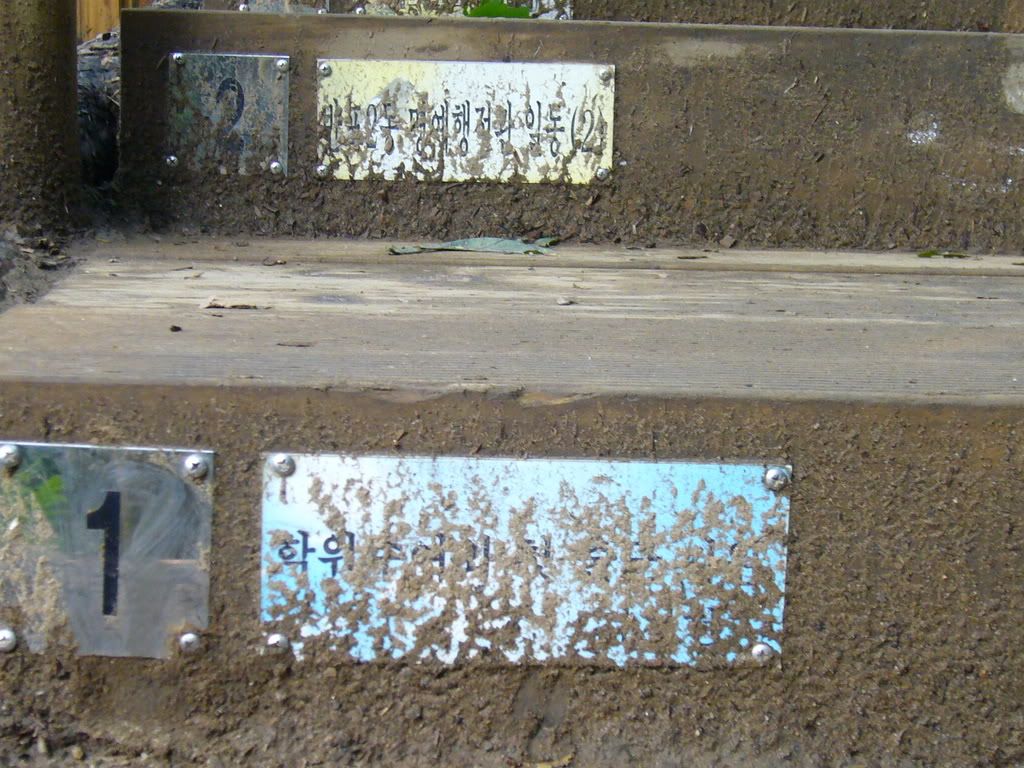
I know that this way might be cumbersome and unnecessary, considering the many other gentler ways to the top, but take it from someone in the know, it is worth it.
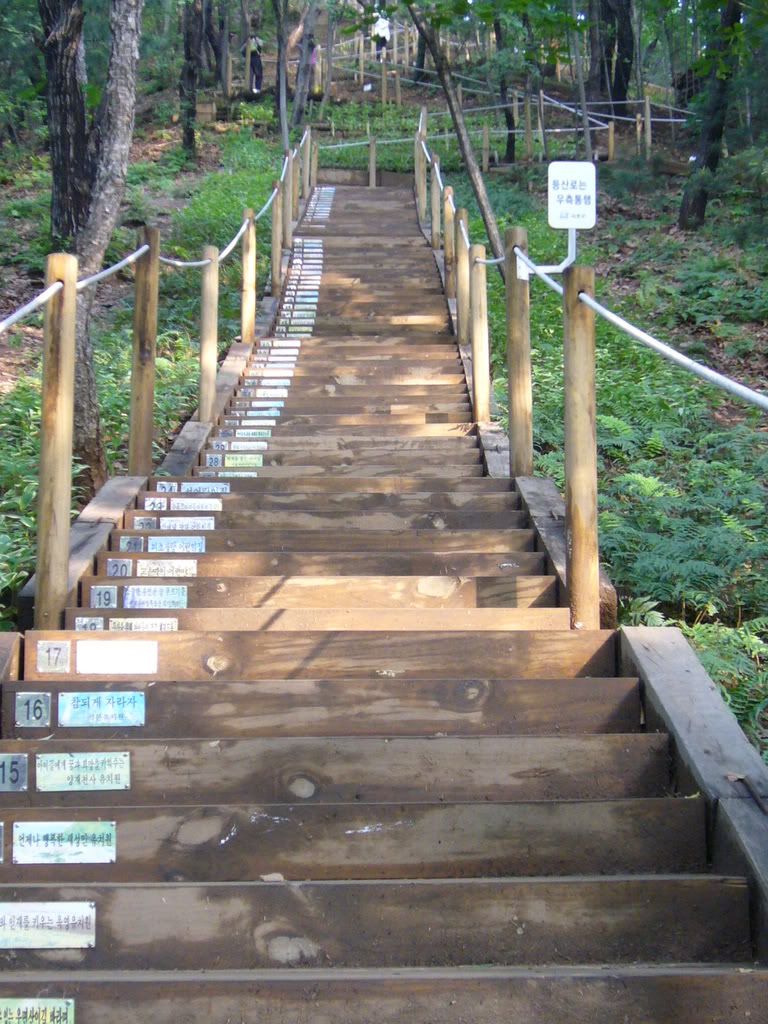
Keep going! Ignore the fact that your knees are creaking and your calves feel as if the are going to explode.
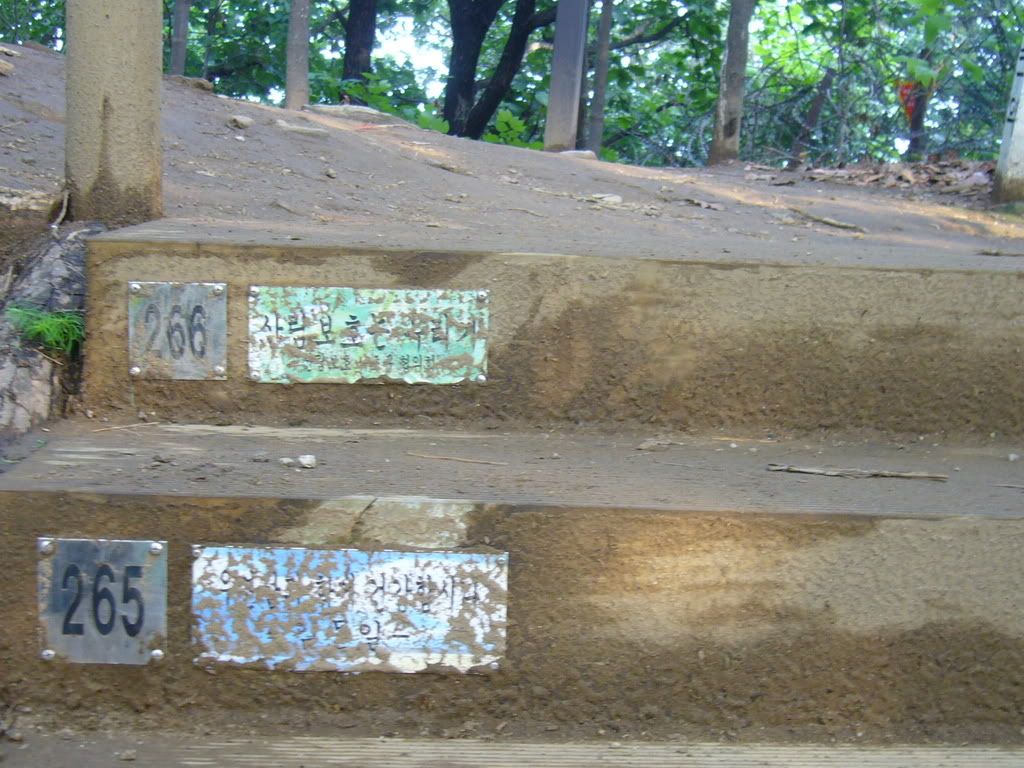
Push through the pain barrier! Ignore the fact that your head is spinning and your vision is blurry.

You see! Didn't I tell you it would be worth it! Now you'll get a birds eye view of this magnificent city, a testament to the power of man, the shining light of Asia!

Bugger.

It's a sad fact of life. Stick 23 million people into one place and you are going to get smog. It could be worse though, it could be
yellow dust.
(From here)
At the foot of the mountain there is a fantastic little temple called Daeseongsa.

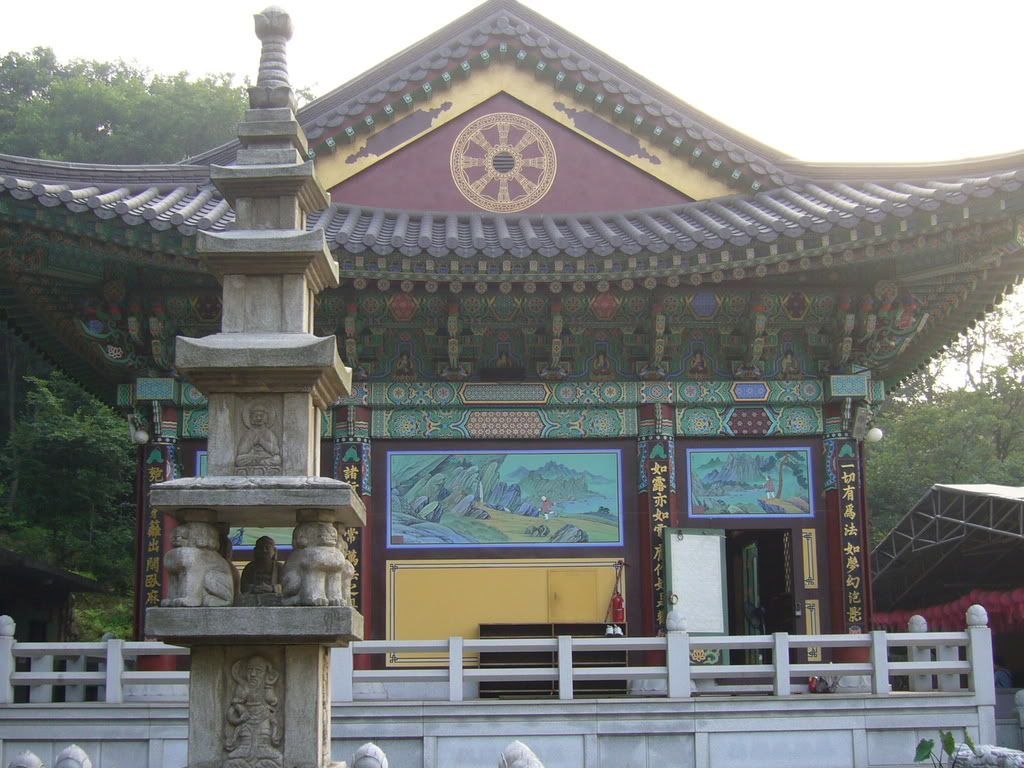
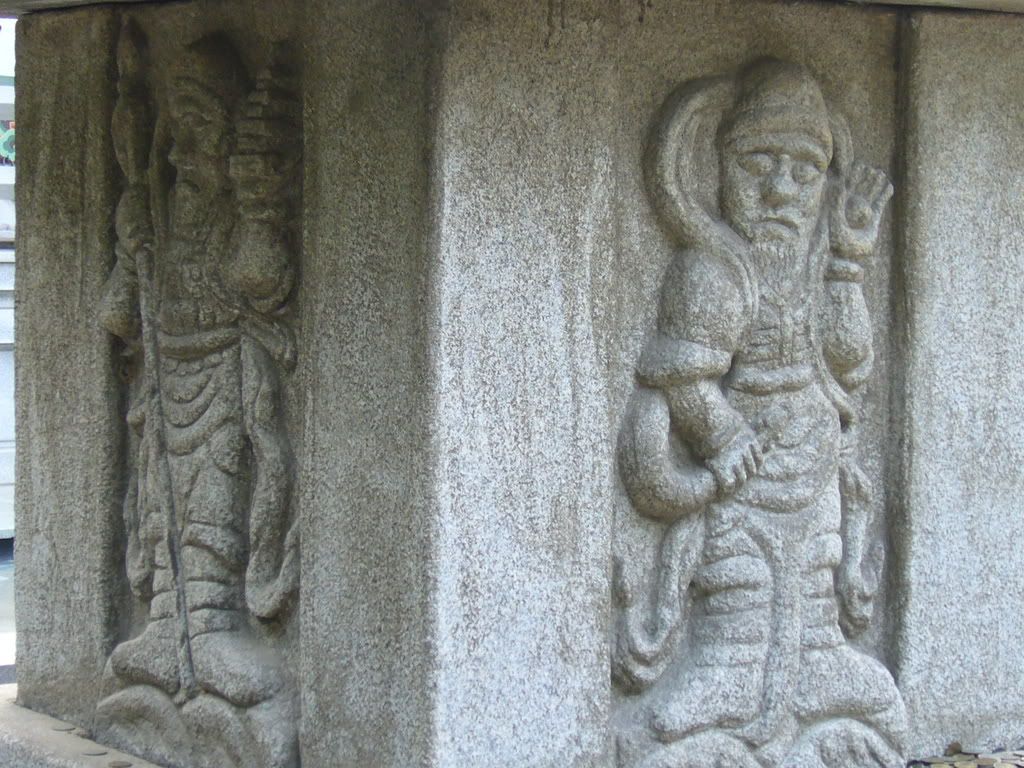
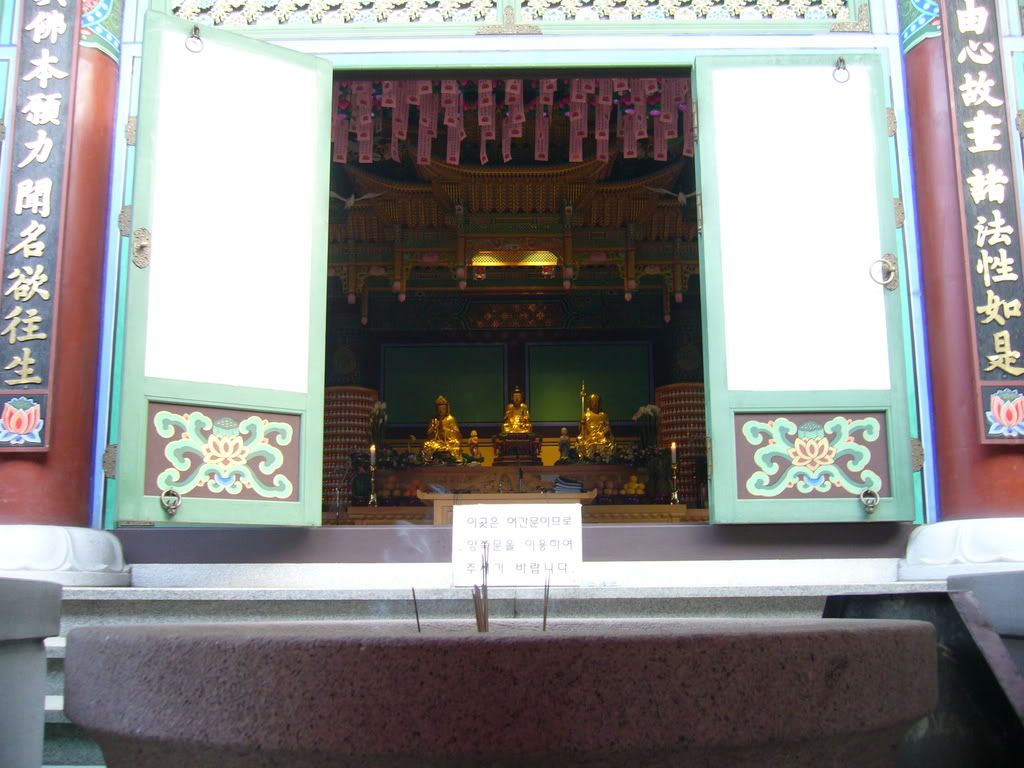
The famed Indian monk
Malanada stayed here in 384. Feeling rather ill from the local cuisine and a tad homesick, he drank from the spring at this temple and was revived.
More recently it was the base for
Baek Yong
Seong, a monk and leader of the
March 1st Independence Movement in 1919.
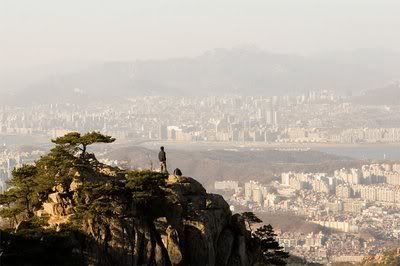

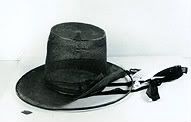

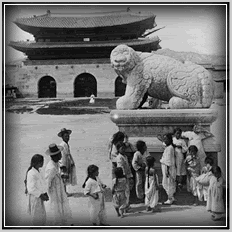



 Early mornings on the mountain can often resemble an episode from
Early mornings on the mountain can often resemble an episode from 
























